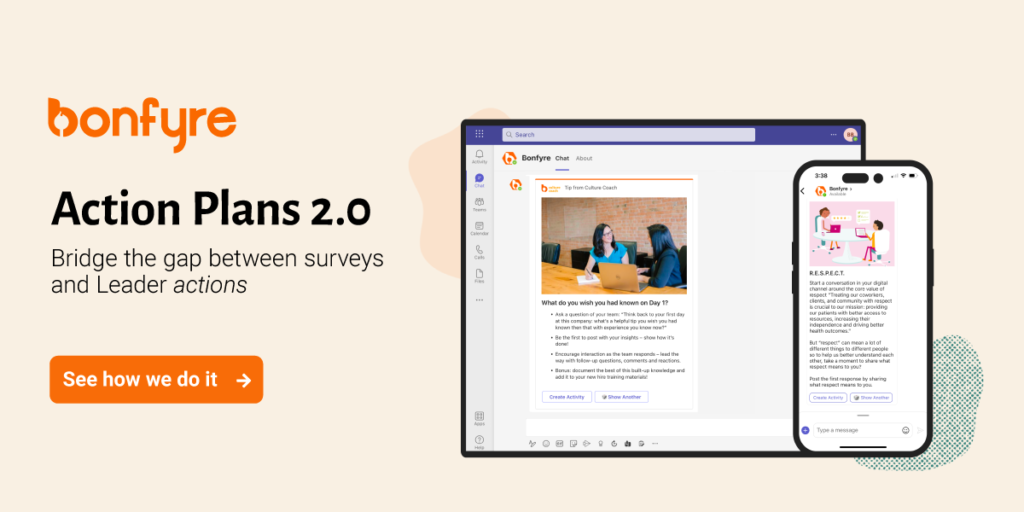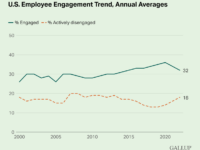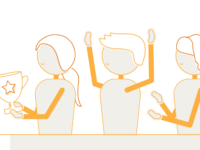It’s no secret our society has gone through a staggering degree of change in recent years.
The impact these changes have had on the working world has been profound. The nature of the work we do, the people doing work, the technology we use and our expectations of work look completely different today than from 20 years ago. Taking note that the cycle of change is only accelerating, through close examination of four societal changes, we can catch a glimpse of what the future of work has in store for us.
The nature of our work has changed
How? Our transition to the knowledge economy is in full swing. A concept first described by Peter Drucker, the knowledge economy details a society where knowledge and information, not material products, are the most valuable economic resource. Knowledge workers, then, leverage education, expertise and specialized skills to produce new systems of knowledge and understanding of the world. A report from the Wall Street Journal shows that knowledge work positions have been growing by 1.9 million jobs each year. Routine labor (manual labor or clerical/administrative office work) growth pales in comparison, adding 100-250,000 jobs per year.
Why does it matter? Routine labor roles are now endangered professions. The University of Oxford estimates 47% of all U.S. jobs are at risk of computerization in the next 20 years. The roles most at risk are those that do not require specialized education. AI and automation will grow alongside the increasing share of knowledge workers in the labor force, and even come after functions of knowledge work. Consequently, the amount of knowledge transfer that will become part of our jobs will increase. It will become every employee’s responsibility (not just leaders’) to capture, distribute and share knowledge within the organization. Because the marketplace will be changing quickly, knowledge must become editable and flexible so workers can learn new skills that allow them to innovate and problem-solve at pace.

The people doing the work have changed
How? Our workforce is more diverse by nearly every conceivable metric. Where once middle-aged, white males were the primary drivers of the labor force, we are now driven by a much less homogenous working population. Women, now half of the workforce, are projected to become the majority by 2020. People of color now make up one-third of the labor force, a share that will only grow as Gen Z, the most ethnically diverse generation in U.S. history, begins working. And we have more younger and older workers than ever. The Pew Research Center shows that millennials became the largest generation in the labor force back in 2015 (estimated to be 50% of the global workforce by 2020). At the other end of the spectrum, Americans ages 65 and older are projected as the fastest growing segment of the labor force.
Why does it matter? Diversity brings a strategic marketplace advantage to the workplace; research shows that diverse workforces outperform more homogenous employee populations. Managing populations of varying age, gender, and ethnicity brings a greater understanding of how diverse bodies of people work collaboratively together. That knowledge, mixed with the unique perspectives that come from diverse populations, increases the likelihood of innovation within the organization. But to truly capitalize on this competitive advantage, we must collectively understand that when it comes to work, one-size-fits-all simply doesn’t. Today’s workforce wants more than the past population did. Work models, compensation and benefits, recognition and motivation programs, and everything in between will need to become more flexible to engage our diverse employees and their equally diverse preferences.
The technology we use has changed
How? Once upon a time, the most advanced technology lived in the workplace. The industrial revolution set the stage for the working world to be the primary mover of technology, and this continued well into 20th century. Technology like factory machines, mainframes, desktop computers, even items like fax machines and dot-matrix printers, were all things people “experienced” at work. Today, that experience follows us where we go. Consumer technology now drives innovation. Once, the thought of having access to all the world’s knowledge in the palm of our hand was inconceivable. Now, the magnitude of this achievement barely registers in our passing thoughts. Our personal devices are now indispensable fixtures of the workplace, making it easier than ever to get our work done. But more importantly, the software we use at work is taking its cues from consumer programs: streamlined, intuitive, and customizable for each user.
Why does it matter? Programs tailored to individual workers mean that data is collected at the individual level. And with that user data, comes a degree of personalization that previously was impossible. Today, it’s not uncommon for something like an incentive program to offer customization by way of personas–categories that sort workers into discrete, but broad personality types. But the data we’re collecting today will allow us to create work programs in the future with unique specificity to each individual. For social communications technology, this degree of data collection means we can examine workers’ behaviors at the individual level. Over a period of time we will be able to map patterns of how each person communicates with others. If there’s an anomaly, it might be an indicator of an abrupt change in that worker’s life, providing leaders unique opportunities to support workers when they need it most. Thus, our ability make informed decisions for our workforce will become more potent as data collection and analysis increases in complexity.
Our expectations have changed
How? The rise of social media completely changed our relationship with information. Social media made information more accessible and digestible, delivering content in a bite-sized format we can quickly–and conveniently–consume at our whim. We are now completely immersed in information at all times, and more often than not, access it while we’re multi-tasking. Social media is now a primary source of news for 60% of Americans, but for that same percentage of millennials, the current and future drivers of our workforce, it’s just something to encounter while doing “other things.” Information is no longer something that we seek out; it’s something we have served to us while we juggle the blended responsibilities of life and work.
Why does it matter? When it comes to enterprise learning and education protocol, people don’t want (nor do they have the time) to sit in front of four-hour learning modules. We now expect content to be short, interesting and convenient to consume. As noted before, knowledge must become flexible and editable to facilitate the efficiency and ease of learning. That means learning curriculum must become significantly shorter, highly specific, and consumable at our convenience; in other words, microlearning. Microlearning meets our new expectations of content by being designed with the aforementioned criteria in mind. We expect to be able to learn new skills while meeting the demands of our current roles unobstructed. As automation and AI accelerate their disruption of work, microlearning will be the life preserver keeping our workforce afloat, satisfying our intensifying learning needs while enabling us to keep our organization running.
Looking forward, we must embrace that change isn’t just inevitable, it’s our new normal. Ultimately, the companies that will best adapt to the future of work are companies whose leaders accept that the old ways of doing things are incompatible with our new, ever-evolving work climate.
This article was originally published in Talent Culture.




 5 min
5 min




